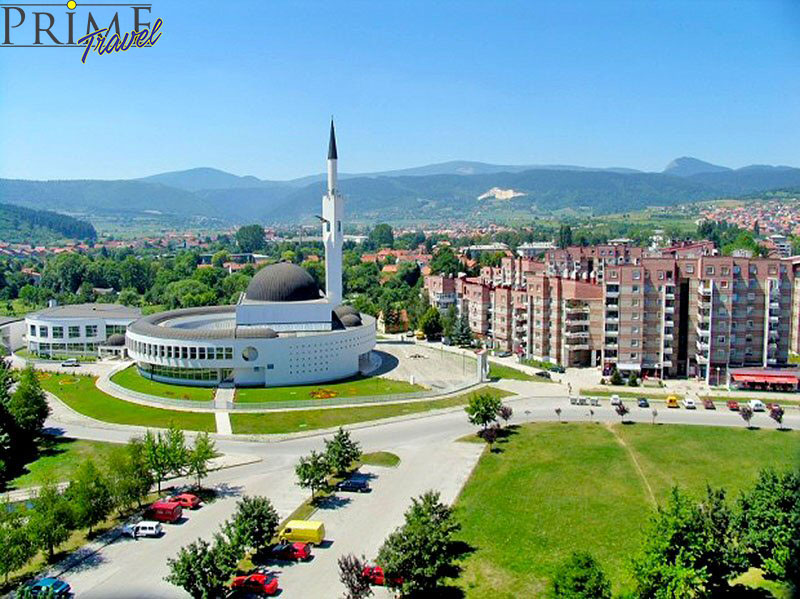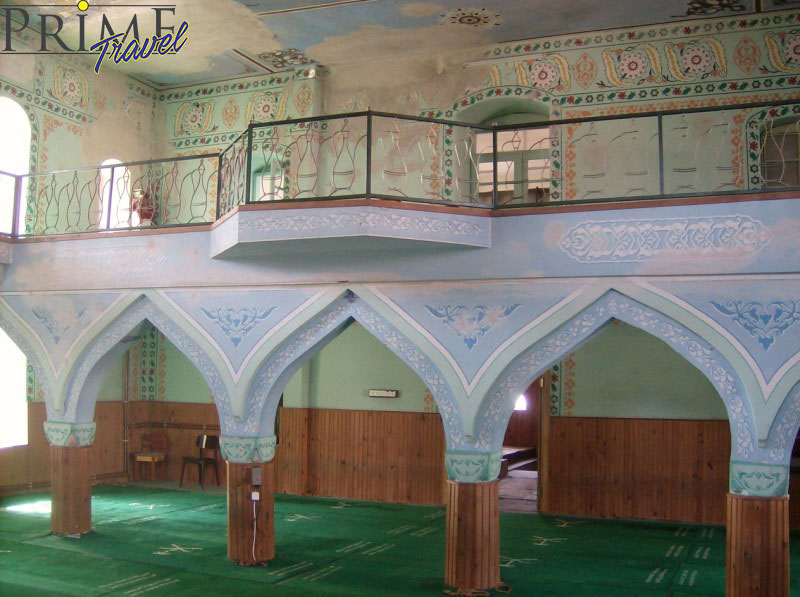









Price: Contact us
Tourist attractions in Bugojno:
1. The Church of St. Ante in Bugojno, is known as one of the largest churches in Bosnia and Herzegovina.
2. Ajvatovica known as pilgrimage of Muslims in Prusac, one of the oldest cities in Europe, which is linked to the legend of Ajvaz-grandfather. The ancient Romans wrote about this small town once known as the "castle bianco". At the time of Tvrtko Kotromanić Prusac the town was called Biograd. It is organized once a year.
3. Ethno Village Rostovo
The church of St. Anthony
Parish of Bugojno was created by separating from the parish of Gornji Vakuf (then Upper Skopje) as local curacy in year 1844 and since then has nuts. In 1858 it was declared as Parish.
The Franciscans are operating here since the time of Bosnian independence. There are indications that in the 15th century in Vesela Straža (today Vesela near Bugojno) there existed a Franciscan monastery, which clearly points to the long continuity of Franciscan presence.
Since the independence of Bugojno in 1844, the parish priest lived in a rented house in a small village, but soon he built a humble parish house and chapel. In 1854 there was built a more appropriate house, which was replaced by a new one in 1922.
The construction of the present parish church started in 1879, which took a long time to construct. The church is covered in 1886. After his architecture it follows a basilica type of church. According to the size, besides Tolisa, it is the largest one in Bosnia. The bell tower was built much later. By the end of the seventies of the last century he was upgraded in the height, because the church was disproportional to the normal size of a church. The project for the expansion of the bell tower was made by the architect Karl Pařik (Pařik) in 1936. On it are three bells. In the first half of the eighties the church was covered with copper. During the last war the church was badly damaged and the tower burned.
The church altar is Tyrolean origin, which is made by Franz Schmalzl from Tirol (St. Ulrich, Gröden). Four vitrail from Stane Kregar were done in the sixties, and ten vitrail from S. Šohaj and rosette I. Dulčića in 1990. The church also contains the Stations of the Cross by Josip Bifela (1984), the picture of Mr. Jurkića Primanje in the Third Order (1956), and the altar mensa of Z. Grgic. The interior of the church is regulated by the project from T. Strauss. According to his draft, benches were made (1990) and on the lateral side of the church (east) they pierced new doors. Mestrovic bronze statue of St. Ante Padovansk (is a replica of the statue that is located in St. Anthony in Belgrade) is set above the entrance door to the front of the church. The church has pipe organ of 27 registers (builder: Jenko, Ljubljana 1979).
There are several subsidiary churches in the parish: Drvetine (built in 1970, the bell tower and a place for religious education in 1988; Stations of the Cross J. Bifel, picture of Sv. Ana I. Rados), Donji Vakuf (renovated in 1990), Guvna ( built in 1990, picture of St. Francis Ivica Rados from Travnik), Bristovi (built in 1990, the interior was painted by I. Rados), and eight chapels and many cemeteries.
The current parish house was built in 1967 and expanded in 1990. Within the house is also situated a religious hall. The house provides a painting from Mr. Jurkića (St. Ivan Krstitelj, from the year 1940) and one sculpture from Lj. Antunovića (Skopje´s mother). The household was done by the Franciscan Sisters. The same sisters have their monastery near the parish house.
Bugojno parish had 3,557 Catholics in 1877, and in 1935 5,523 Catholics. During the time, from parts of these parishes were formed parish Kandija, Gracanica and Glavica.
The Franciscans in Bugojno raised the elementary school in 1868, which they led themselves. Since the mid-nineties of the 19th century in the administration also worked the Sisters of Charity.
Ajvatovica
the largest pilgrimage of Muslims in Europe and one of the oldest in Bosnia. Ajvatovica is deeply rooted in the identity of Bosniaks with a tradition of five hundred years. It is situated at the foot of the mountain Suljaga and away six to seven kilometers from the old town of Prusac, former Akhisar (White City), extremely important urban center during the Bosnian pashaluk. Ajvatovica is the specificity of Bosnian Muslims, because it has a native character, evolved from the tradition of the Church of Bosnia and krstjanskih / bogumiliskih prays for rain, fertility and protection of summer crops. Tradition Ajvatovica binds to the old tradition of Bosnia, the way to start Ajvatovica falls on the seventh Monday after Jurjev, instead of determining the beginning of the Hijri calendar.
For certain it is not known when the first Ajvatovica was held, but it is known that the Ajvatovica is named after Ajvaz-grandfather, Islamic scholar and dervish who lived in the 15th century. Ajvaz-grandfather came to Bosnia with Sultan Fatih II in 1463, given the task of spreading Islam in Skopje. Ajvaz-grandfather was explaining Islam to Bosniaks in a pleasant and appropriate manner, most of all according to his personal examples. He helped the locals and solved their everyday problems, which is characteristic for the Sufis of that time. The legend says about Ajvaz-grandfather that he found a good mountain hotly to bring water to Prusac, which lacked with water. Not far from the source a rock got on his way long 74, and wide 30 meters. Folk tradition says that Ajvaz-grandfather prayed forty days to God to split the rock.
Praying the forty morning he fell asleep, in a dream he saw two white rams crashed and the rocks came apart. When he woke up he saw the rock disassembled. After that Ajvaz-grandfather built the water supply of wooden pipes, and led him through the cliff to Prusac. It is not known how good the condition of the plumbing was after the death of Ajvaz-grandfather, but it is known that the first plumbing reconstructions were made by Sheikh Hassan Kafi Pruscak. Then it was restored by the Bosnian governor Miralem Pasha in early 1785. This water pipes are used from Pruščacima until 1931 when the sanitary institution in Banja Luka made modern plumbing.
Ethno Village Babici-Rostovo
The Sports Recreation center "Rostovo" was opened in 1984 for the needs of the Winter Olympics in Sarajevo and is located at 1160 meters above sea level. After the Olympics, it was used mainly as a winter retreat and recreation center for various athletes and sports clubs. Among the frequent guests those years were the soccer players of the Split Hajduk team and the Iskre from Bugojno. The center was renovated in 2006 and began operating soley during the winter period. In 2008 we enriched our sports and recreation services to offer a hiking trail, biking trail (mountain bikes can be rented at the hotel), and horseback riding. Outside of the hotel are tennis courts which are covered and heated during the winter for our guests to enjoy. For sports teams and individual groups we offer the sports hall which is heated during the winter for indoor soccer, basketball, volleyball, and handball. We have built an ethno village which has accommodation for 60 persons. The village offers insight into the past, tools and equipment used by our ancestors.
Along with the hotel, we offer accommodation in authentic village houses which offer modern amenities inside. The village is comprised of houses and water mill and currently under construction are authentic blacksmith house, milking house, and horse stable. During the winter season guests can enjoy sledding around the village and during the spring and summer in recreation and sport horseback riding and buggy riding. The village is home to interesting artifacts from the past, including tools used by our ancestors and domestic animals from this region.